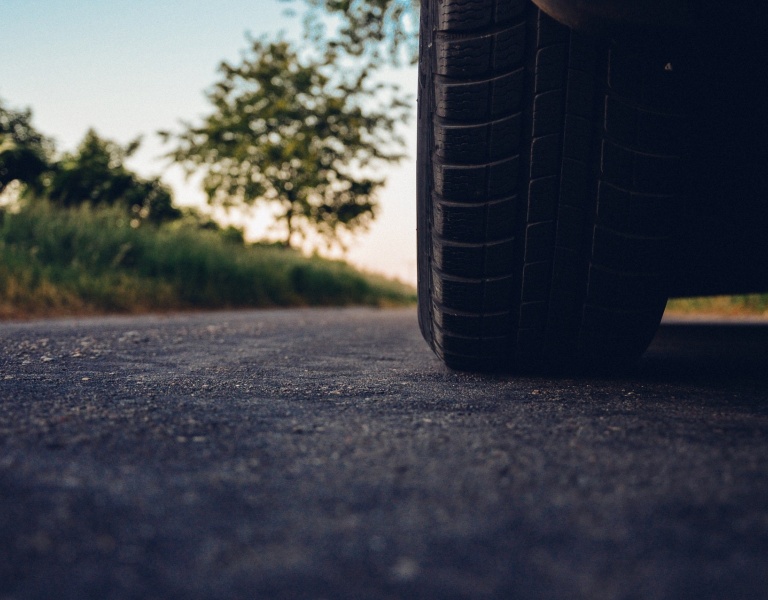Reduce Your Use - Reducing Your Fuel Use
To help you 'Reduce Your Use', we're sharing top tips to help with your transport fuel costs, based on how much fuel you use, how far you travel and more.
Transport in general costs Irish households more than food, including eating out!
To help manage this, please find below a set of tips we've developed to help you manage the costs of transport fuel.
Your individual circumstances need to be taken into consideration but we hope there is at least one action from the following information that you can implement to Reduce Your Use.
Should you or your family or friends be struggling to pay home energy bills this winter there is help and support available. For more information, please visit gov.ie/ReduceYourUse.
How much fuel do you use?
What did your last fill of fuel cost you?
At SEAI training, we often hear that people spend up to €50 per week to fill up their car. But in recent weeks, this estimate has increased to €100 per week. And many households have more than one car on the go.
€50 x 50 weeks = € 2,500 per year in fuel alone
(and 1,500L x 2.68kg CO₂/L diesel = 4 tonne CO₂ per year)
How many litres did you buy?
If you don't remember, we explain how to figure that out at the end. If you buy your fuel in litres, rather than Euros, you can see the €uro value of savings from now on.
How far do you travel?
In Ireland 29% of trips by car are less than 2km. 60+% are less than 8km, according to the CSO.
Why does that matter? It takes 5-8km to warm your engine (and yourself inside the car on these cold winter days). This means both the pollution control equipment and the fuel performance you paid for are not working as they should and costing you more money.
If you must use the car for short journeys (walking and cycling are free and healthier), consider doing several trips together, so you and the engine are fully warmed through, and the engine can give you its best performance.
What can you do to save fuel in the car you have?
Eco-driving is a new (2005) driving style designed to save you money - you can see eco-driving videos online. You can also see the free eco-driving module on SEAI Energy Academy or follow these 5 golden rules of eco-driving from the EU funded Ecodriven programme 2005-2012 below:
1. Anticipate traffic flow: Look ahead as far as possible and anticipate surrounding traffic
2. Maintain a steady speed and low rpm: Drive smoothly, using the highest possible gear
3. Shift up between 1,200 (diesel) and 1,800 (petrol/gas) revolutions (or rpm)
- Watch your dashboard. It may tell you when to change up (do it!)
- If your car is a modern automatic - leave it in automatic E (eco) or D (drive) mode
4. Check tyre pressures frequently: At least once a month and before driving at high speed
- Choice of tyre and low tyre pressure can cost you up to 5% extra fuel. Industry roadside checks show 30+% of tyres can be 25% under inflated - be sure yours aren't.
- You can find more information and tips on how to maintain your tyres your local tyre dealer - vist the Irish Tyre Industry Association (ITIA) website to find your local tyre dealer and for further information
5. Consider any extra energy: Take off roof racks, roof boxes and empty the boot
- The rule of thumb is one extra 60kg passenger will cost you 2% extra fuel.
- An empty roof rack costs you an extra 5% in fuel use (on average).
How you can sustain the savings you make
Your car will have an outside temperature display, this display will also tell you the distance and do the math for Litres per 100km (or MPG* in old money). If you cannot see the L/100km on your dashboard, take out the manual and follow the instructions to turn it on (vehicles since 2005 have a trip computer display of one sort or another).
What to look for on your dashboard trip computer (before you reset it)
- Ø L/100km the 'Ø' symbol means average on most vehicles, you may see other symbols.
-
If the distance travelled on the trip computer is over 1,000Km it's a good indicator of your average L/100km i.e. there's no need to do the math, your car will do it for you.
-
Take a photo to date and timestamp the L/100km. Put a note in your diary to look at it again in another 1,000km to see how much you have saved in L/100km.
-
When driving, set the trip computer to show live L/100km, you will know it is live as it will show L/hr at idle and the L/100km will vary as you drive.
- On motorways you will see a 25% saving by slowing from 120kph to 100kph
- Always obey speed limits, your car may already tell you the maximum speed limit.
- Slowing down will always save you fuel except in a lower gear, so go as slow as is safe when in the highest gear for the road conditions (and speed limits).
-
Gear shift indicator e.g. if you see 3 > 4 on the dash it means shift up from 3rd to 4th gear.
-
Warnings to turn off air conditioning, mirror or window heating - these can be handy reminders as both can use a lot of fuel on short trips. You may also see low tyre pressure warnings (act on all dashboard warnings).
*To convert L/100km to MPG and vice versa use this handy number 282.5 i.e. 5L/100km to MPG is 282.5 ÷ 5 = 56.5mpg. And 56.5mpg in L/100km is 282.5 ÷ 56.5 = 5L/100km.


